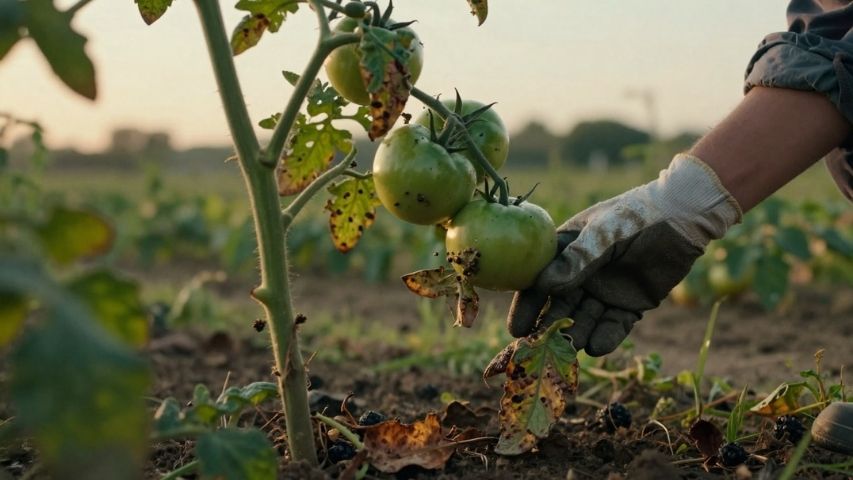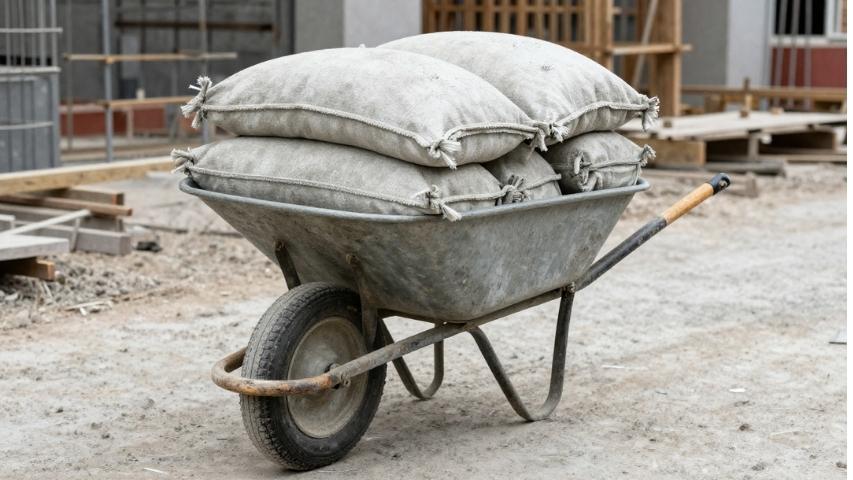Pruning rose bushes can seem intimidating at first, but the practice is essential for producing stunning blooms and ensuring your roses thrive year after year. The question many gardeners face is, “When is the best time to prune my roses?” Don’t worry—we’ve got you covered.
This comprehensive guide will teach you about the optimal times to prune rose bushes, why pruning is a must, and how to do it right. Whether you’re a budding gardener or a seasoned enthusiast, these tips will help you master the art of maintaining healthy, vibrant roses.
Why Pruning is Crucial for Rose Plants
Let’s start with the basics. Why should you prune your roses at all? Pruning roses serve multiple purposes that ultimately lead to a healthier, more beautiful plant.
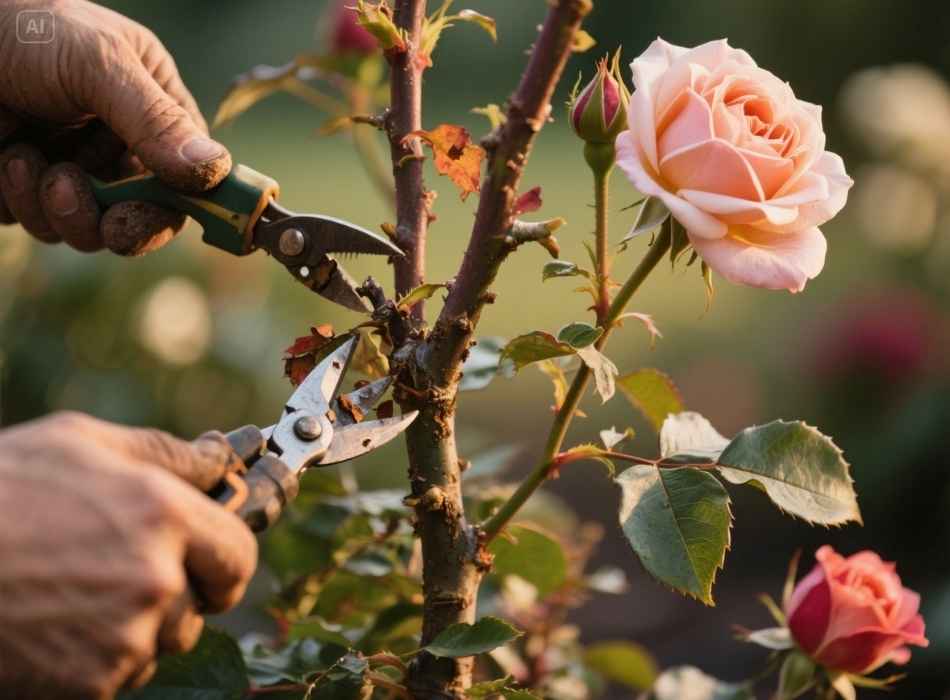
- Promotes growth: Removing dead or diseased branches allows the plant to redirect its energy to new, healthy development.
- Reduces disease risk: Creating an open structure improves airflow and reduces the risk of fungal infections like powdery mildew and black spots.
- Encourages more blooms: Pruning stimulates your rose plant to grow new flowering stems, giving you more stunning blossoms to enjoy.
- Maintains a pleasing shape: Left unchecked, rose bushes can become overgrown and unruly. Pruning helps you shape them into a tidy, structured form.
Now that you know why pruning is essential, let’s move on to when you should grab your shears.
The Best Times to Trim Back Rose Bushes
Timing is everything when it comes to pruning roses. Depending on your climate, rose variety, and seasonal changes, there are a few key times of year when pruning is ideal.
Late Winter to Early Spring
The perfect time for most rose pruning is late winter to early spring when the plant is still dormant but showing signs of waking up (bud growth). This timing allows you to cut back the plant without stressing its energy reserves and sets the stage for a great growing season.
Why this timing works:
- Plants are dormant, reducing stress from pruning cuts.
- Buds start to swell, making it easier to see where to make your cuts.
For gardeners in warmer climates, late January or February is often the right window, while those in colder regions may need to wait until March or April to avoid late frosts.
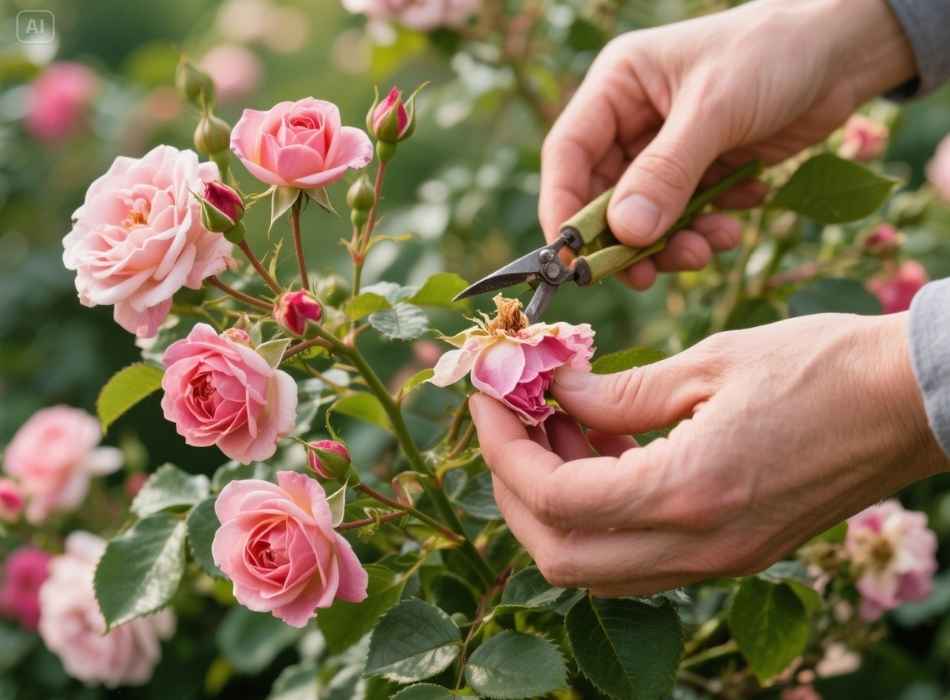
After Each Bloom Cycle for Repeat Flowering Varieties
If you have roses that bloom continuously throughout the growing season, such as hybrid teas or floribundas, you should deadhead spent flowers after each bloom cycle. This encourages the plant to produce a fresh flush of flowers.
Tip: Focus on deadheading rather than heavy pruning during active growth periods to avoid over-stressing the plant.
Light Fall Pruning Ahead of Winter
While major pruning is best left for late winter, you can tidy up your roses in the fall to prepare them for winter. Remove dead wood and long branches, which could break in strong winds or under snowfall.
Important Note: Avoid heavy pruning in fall, as it may encourage new growth sensitive to freezing temperatures.
How to Prune Roses Based on Their Type
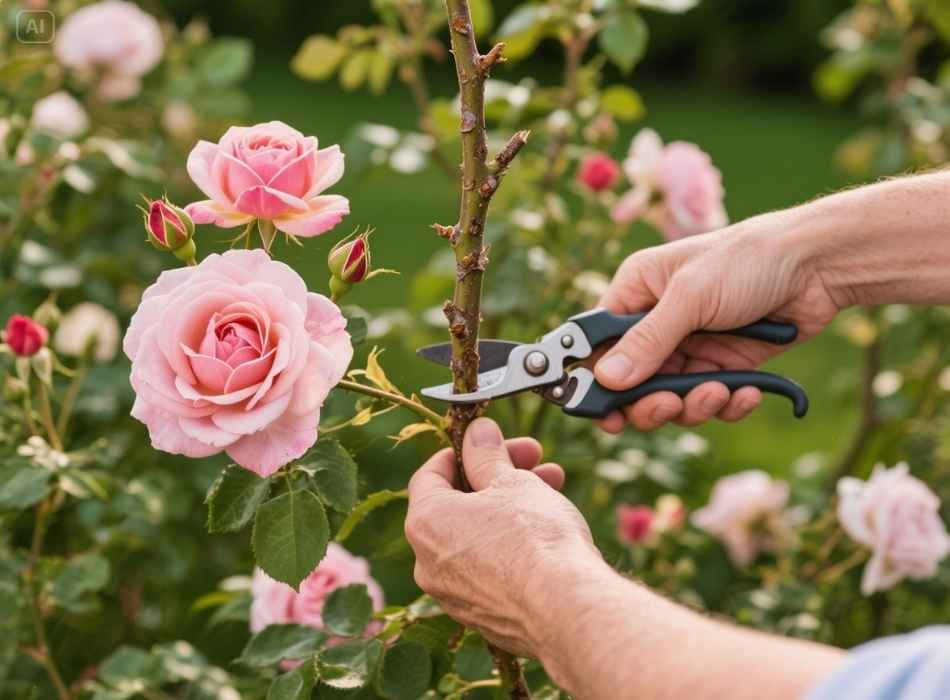
Not all roses are the same, and different varieties require different pruning techniques. Here’s a quick guide to pruning specific types of roses:
Hybrid Teas and Floribundas
- Prune in late winter or early spring.
- Focus on shaping the plant into an open, vase-like structure. This promotes airflow and healthy growth.
- Cut stems back to an outward-facing bud, about 12–18 inches from the ground.
Climbing Roses
- Prune once their first bloom cycle is complete in late spring or early summer.
- Remove weak or old canes and train new canes along trellises or supports to maintain structure.
Shrub Roses
- Maintain shrub roses with light pruning in early spring. Remove dead or damaged branches to encourage fresh growth.
- Keep the natural shape of the plant intact while ensuring it has good airflow.
Miniature Roses
- These compact roses need minimal pruning.
- Trim to shape them in late winter or early spring and remove dead or weak stems.
Tools and Techniques for Pruning Roses
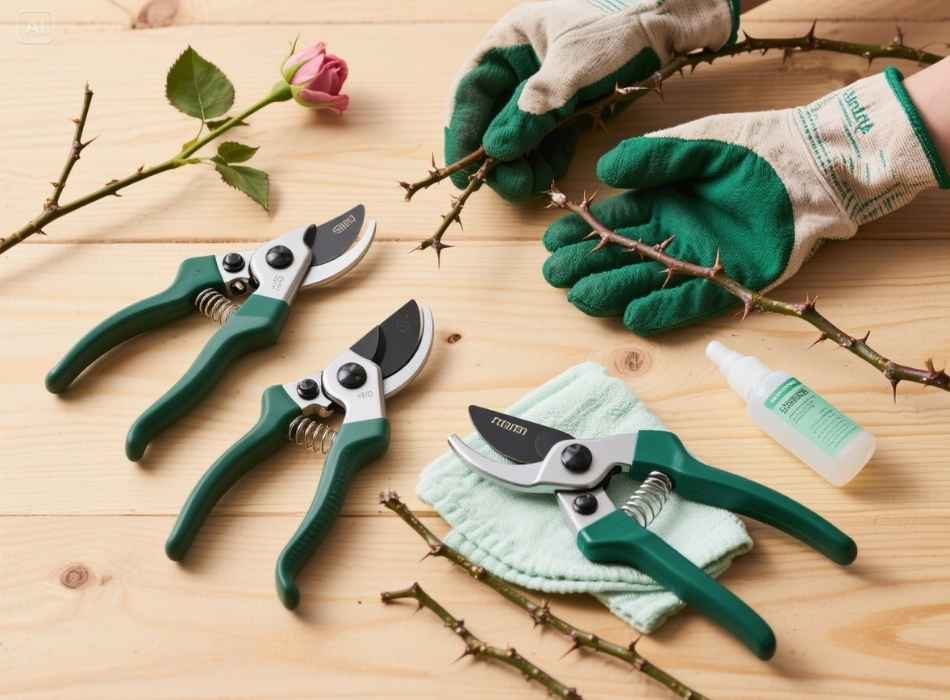
The right tools and techniques make pruning roses easier, safer, and more effective.
Essential Tools
- Bypass pruners for clean cuts on thin stems.
- Loppers for thicker stems.
- Gardening gloves to protect your hands from thorns.
- Disinfectant and cloth to clean your tools between cuts, minimizing the spread of disease.
Pruning Tips for Success
- Use sharp tools to avoid tearing or crushing stems.
- Always cut at a 45-degree angle just above an outward-facing bud. This ensures new growth won’t crowd the center of the plant.
- Start by removing dead, diseased, or damaged branches. These are often black, brown, or brittle.
- Eliminate any branches crossing or rubbing against others to prevent damage.
- Take a step back every few cuts to assess the overall shape of the plant.
Common Mistakes to Avoid While Pruning Roses
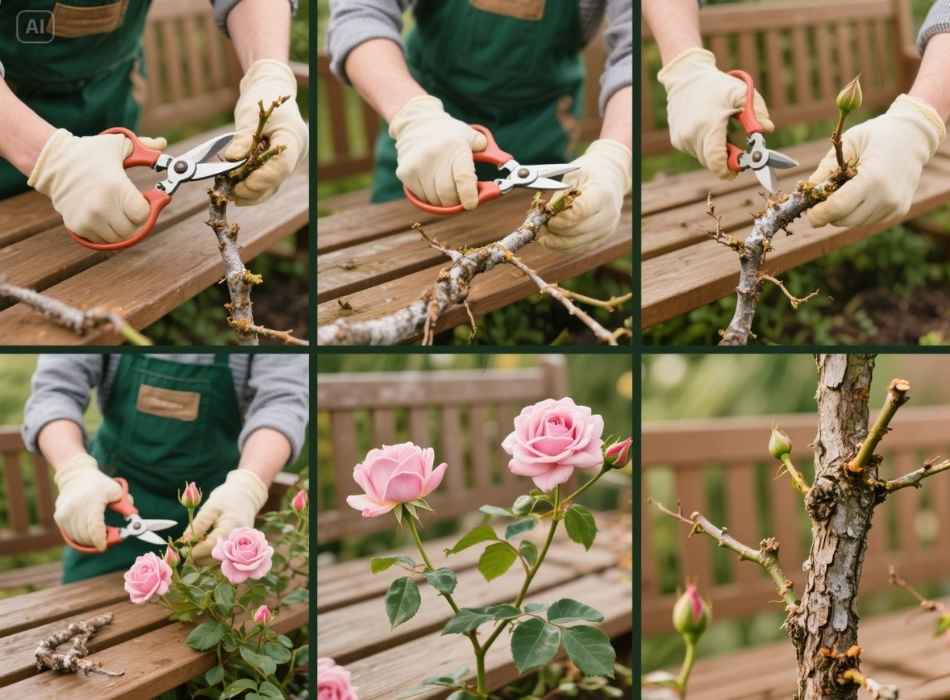
Even experienced gardeners sometimes make missteps. Here are some common mistakes to steer clear of:
- Pruning too early in the season can lead to frost-damaged new growth.
- Pruning too late might reduce the blooms you’ll get that year.
- Cutting too close to a bud can damage it while cutting too far leaves an unsightly stub.
- Over-pruning weakens your rose plant by stressing it unnecessarily.
Signs Your Roses Need Pruning Now
Is it time to prune your roses, even outside the usual schedule? Here are some clear signs:
- There are dead or dying canes that are brown or black.
- Signs of disease, such as black spots or powdery mildew, are present.
- Too many crowded canes are blocking airflow or preventing sunlight from reaching the plant.
Beautiful Blooms Begin With the Right Pruning
Pruning is less intimidating when you approach it as a way to nurture your roses rather than a technical gardening “chore.” By pruning at the right time and with the proper techniques, you’ll encourage healthy growth and enjoy gorgeous blooms all season long.
Remember, rose pruning is a skill that improves with practice. Every cut you make contributes to more vibrant, thriving plants.
Get Your Garden Blooming Today
Now that you know when and how to prune your roses, it’s time to take action. Dust off your gloves, grab your shears and get to work on creating a stunning rose garden.
For more expert gardening advice, tips, and tricks, subscribe to our newsletter or explore our blog. Happy pruning!









